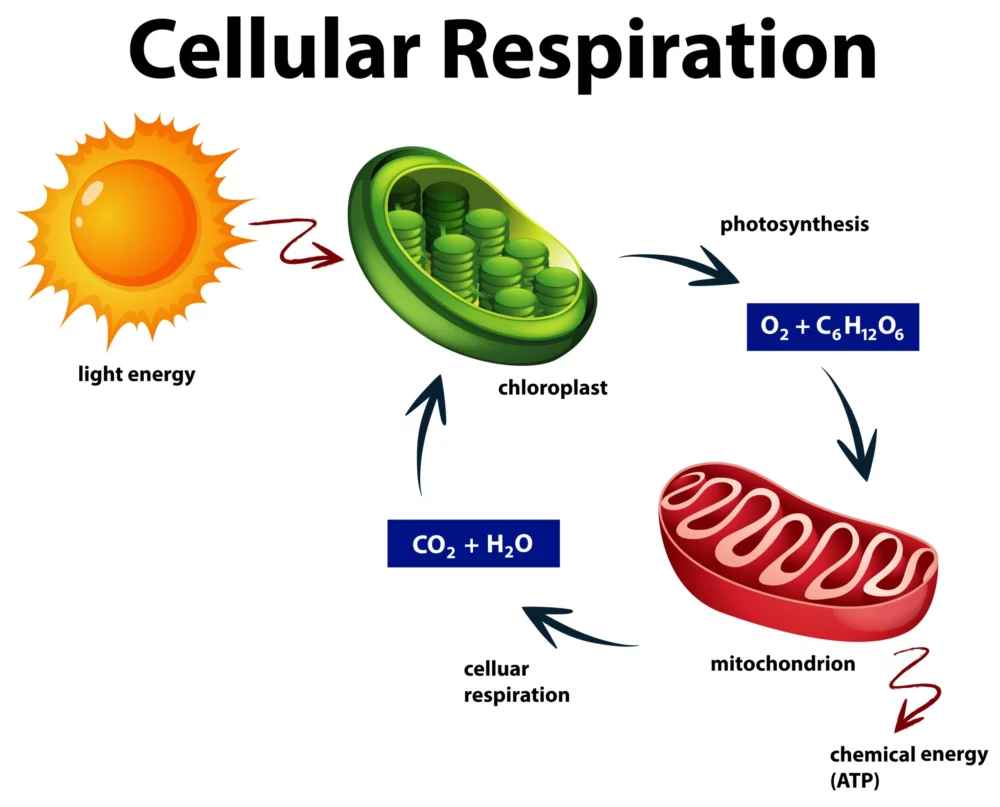Cellular respiration, found in all living organisms, is a fascinating but intricate biological process. At its core, it’s how cells generate the energy needed to power various life functions. In this simplified guide, we’ll unravel the mysteries of cellular respiration, making it accessible to everyone, regardless of your scientific background.
The Basics: What Is Cellular Respiration?
Imagine your cells as tiny power plants. They require a constant energy supply to function, and cellular respiration is how they produce it. The process involves breaking down organic molecules, like glucose, and converting their energy into adenosine triphosphate (ATP), a form readily usable by cells.
The Stages of Cellular Respiration
Cellular respiration unfolds in three crucial stages, each with a specific purpose:
Glycolysis: This initial stage happens in the cytoplasm and doesn’t rely on oxygen. It’s akin to a warm-up exercise before the main workout. During glycolysis, glucose splits into two smaller molecules, producing a small amount of ATP and some other energy carriers.
The Citric Acid Cycle (Krebs Cycle): Now, we step into the mitochondria, the cellular powerhouses. Here, the products of glycolysis undergo further breakdown. This stage generates more ATP, NADH, and FADH2, crucial for the next step.
The Electron Transport Chain (ETC): The real magic unfolds here. NADH and FADH2, generated earlier, donate electrons to a chain of protein complexes. As electrons move along this chain, protons (H+) are pumped across the mitochondrial membrane. This sets up a proton gradient, ultimately responsible for producing the lion’s share of ATP.
The Role of Oxygen
Oxygen plays a pivotal role in cellular respiration. When oxygen is present (aerobic respiration), the process is highly efficient, yielding the maximum ATP. However, in the absence of oxygen (anaerobic respiration), the process is less efficient and may produce byproducts like lactic acid or ethanol.
ATP: The Energy Currency
Consider ATP the universal energy currency in your cells. When your body needs energy for activities like running, thinking, or repairing tissues, it uses ATP. ATP is hydrolyzed (undergoes a chemical process) to release energy that fuels these activities.
The Connection to Photosynthesis
Cellular respiration and photosynthesis are closely connected. While cellular respiration releases stored energy, photosynthesis captures and stores energy from sunlight in the form of glucose. Together, they sustain life on our planet by cycling energy between organisms.
Real-World Applications
Understanding cellular respiration goes beyond the classroom. It forms the basis for grasping metabolic disorders, optimizing athletic performance, and even comprehending your daily energy requirements.
This simplified guide to cellular respiration sheds light on its elegance while stripping away complexity. It’s a testament to how our cells ingeniously extract energy from the world around us to fuel the magnificent symphony of life. Whether you’re a curious student, a science enthusiast, or simply intrigued by your body’s inner workings, mastering the basics of cellular respiration is a worthwhile journey.





Leave a Reply
You must be logged in to post a comment.